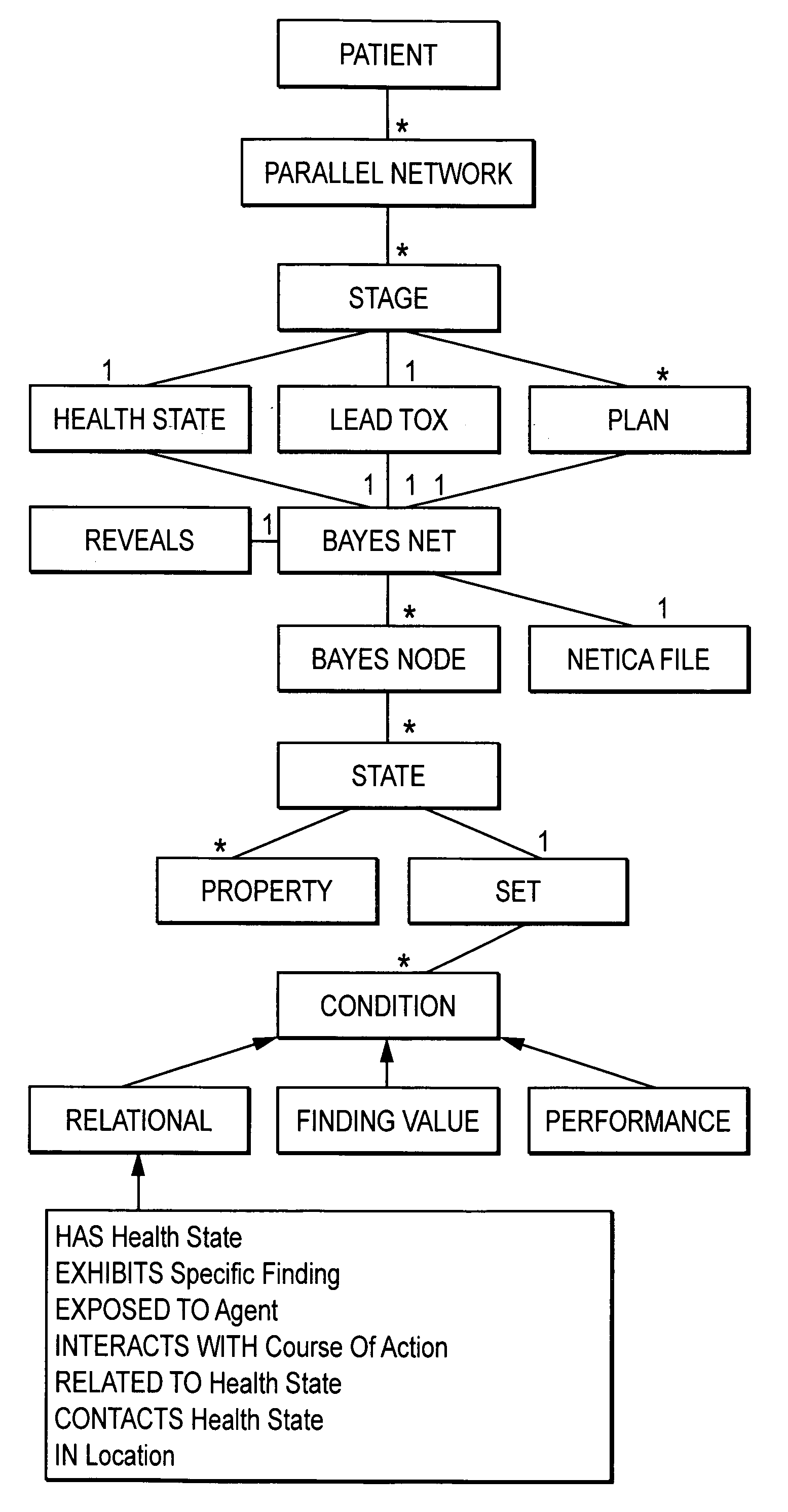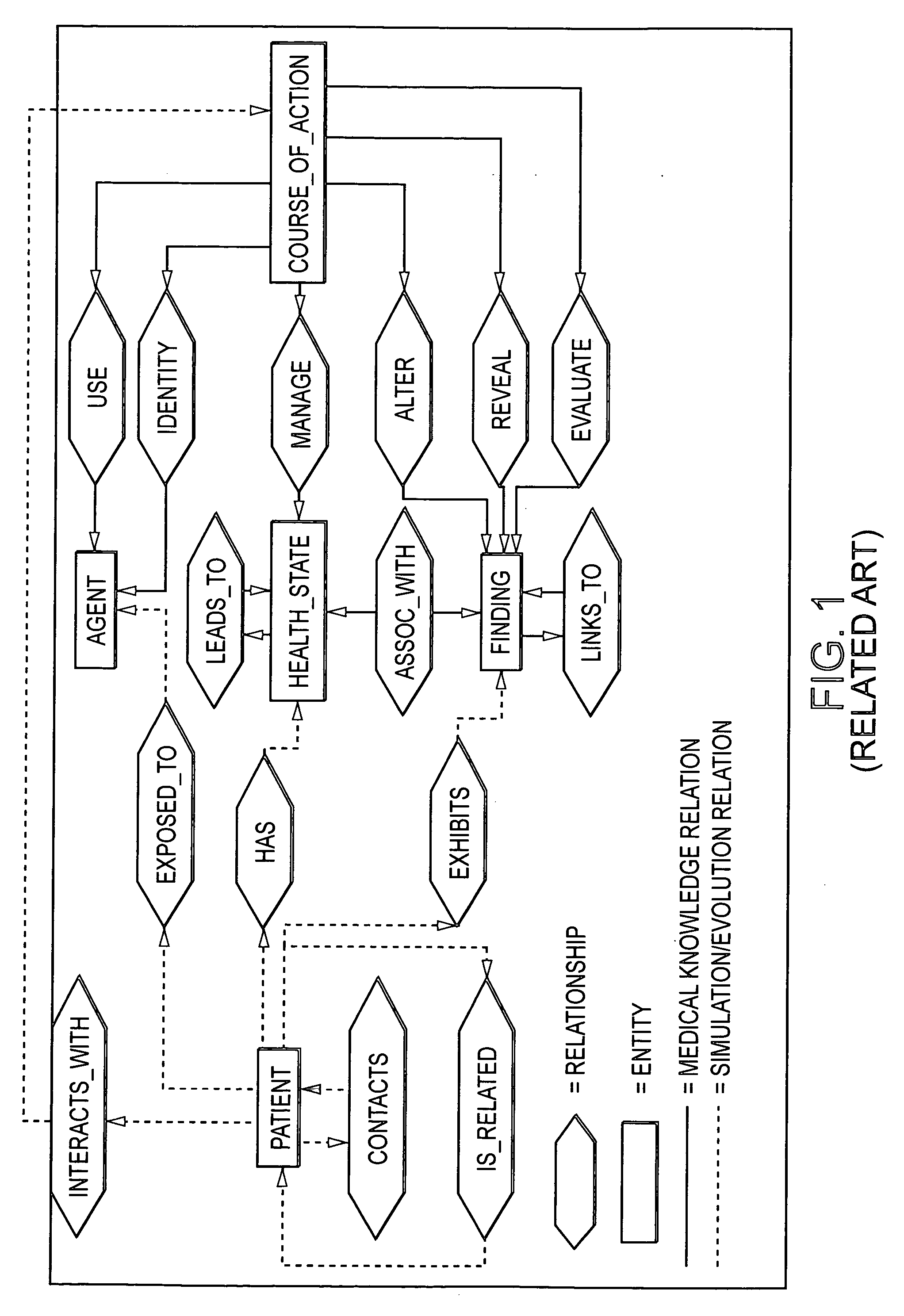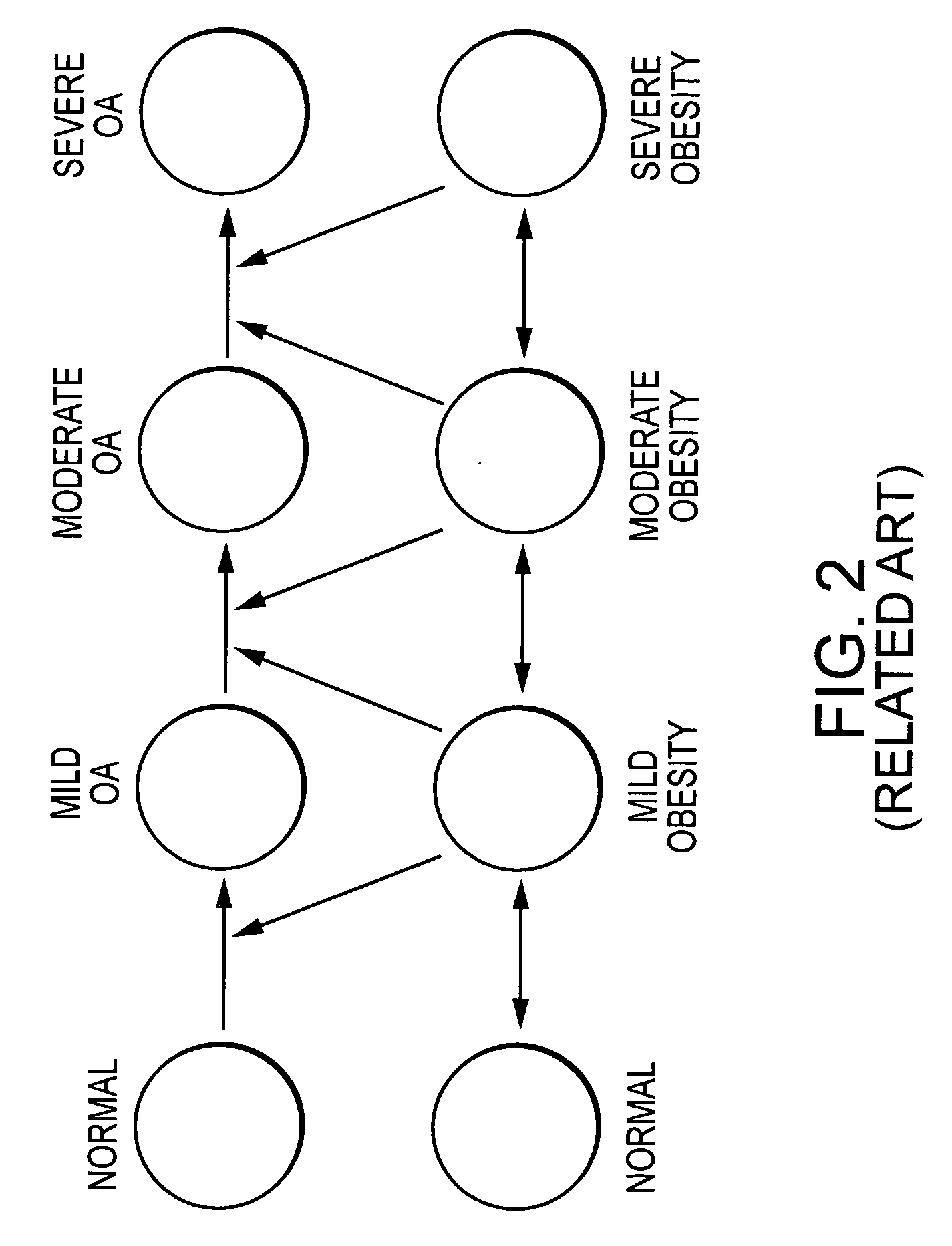Computer architecture and process of patient generation, evolution, and simulation for computer based testing system using bayesian networks as a scripting language
a computer architecture and testing system technology, applied in the field of computer architecture and testing system for computer based testing system, can solve the problems of presently used medical certification process, insufficient problem-solving capability measurement format, and only primitive ability to assess a candidate's problem-solving capabilities, etc., to achieve efficient and affordable scenarios, preserve the security of the certification process, and simplify administrative, economic and especially security issues.
- Summary
- Abstract
- Description
- Claims
- Application Information
AI Technical Summary
Benefits of technology
Problems solved by technology
Method used
Image
Examples
experimental verification
[0508] The prototype ESP simulator generated a series of patients for demonstration at the American Board of Medical Specialties meeting on computer-based testing in Chicago, Mar. 21-22, 1996. Approximately 30 patients were generated and stored over a four day period, including several during the meeting. Each patient generation required about 20 minutes. After generating a variety of male and female patients, data in the knowledge base were skewed to generate middle aged overweight white females. These patients were typically 55 to 65 years old and complained of recently worsening pain in one or both knees. Patients had been morbidly obese for 1 to 3 years prior to presentation, and had at least a 5 year history of mild arthritis in the affected knees.
[0509] Their health problems began with either obesity or mild osteoarthritis 10 to 30 years prior to presentation.
[0510] During the demonstration, most history and laboratory requests returned graphs of values over the simulated pa...
PUM
 Login to View More
Login to View More Abstract
Description
Claims
Application Information
 Login to View More
Login to View More - R&D
- Intellectual Property
- Life Sciences
- Materials
- Tech Scout
- Unparalleled Data Quality
- Higher Quality Content
- 60% Fewer Hallucinations
Browse by: Latest US Patents, China's latest patents, Technical Efficacy Thesaurus, Application Domain, Technology Topic, Popular Technical Reports.
© 2025 PatSnap. All rights reserved.Legal|Privacy policy|Modern Slavery Act Transparency Statement|Sitemap|About US| Contact US: help@patsnap.com



